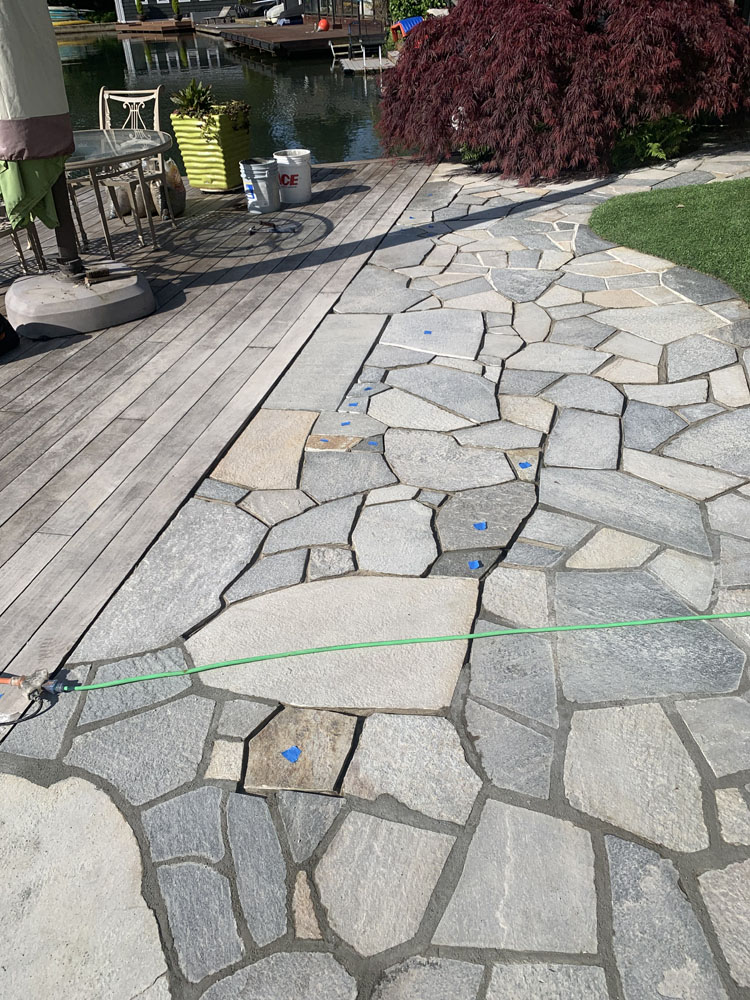Introduction
In the world of landscaping, masonry walkways have long been a symbol of durability and aesthetic appeal. However, with the advent of technology, particularly in design methodologies, the scope of creating these stunning pathways has expanded tremendously. Leveraging Technology: Using 3D Designs for your masonry pathways is not just about how they look; it's about how to create them with precision, efficiency, and creativity. This article will guide you through the innovative realm of 3D design in masonry pathway creation—exploring its benefits, applications, and impact on both homeowners and professionals.
Understanding Masonry Walkways
What are Masonry Walkways?
At their core, masonry walkways are paths constructed using concrete blocks, bricks, stones, or other durable materials. These pathways serve not only as functional routes but also as integral parts of a landscape's aesthetic composition.
Benefits of Masonry Walkways
Durability: Unlike wooden pathways that decay over time, masonry options withstand harsh weather conditions. Low Maintenance: Once installed properly, these walkways require minimal upkeep. Versatility in Design: From modern to classic styles, masonry can accommodate various architectural themes. Increased Property Value: A well-designed walkway can enhance curb appeal and property resale value.The Role of Technology in Masonry Design
The Shift Towards Digital Solutions
Gone are the days when landscape architects relied solely on paper sketches and physical prototypes. The digital age has ushered in an era where technology plays a significant role in designing masonry pathways.
Advantages of 3D Design Software
- Visualization: Clients can visualize the final product before construction begins. Precision: Accurate measurements lead to fewer errors during installation. Customization: Designers can easily modify elements based on client preferences.
Leveraging Technology: Using 3D Designs for your Masonry Pathways
Exploring 3D Design Tools
When it comes to designing masonry walkways digitally, several software tools stand out:
SketchUp- User-friendly interface Extensive library of materials
- Industry-standard for professional designs Excellent for detailed planning and documentation
- Ideal for large-scale projects Facilitates collaboration among multiple stakeholders
How 3D Designs Enhance Project Workflow
With 3D designs integrated into project workflows:
- Communication between clients and designers improves. Construction teams receive clear guidelines reducing confusion on-site. Timelines become more predictable due to precise planning.
Step-by-Step Guide to Creating a 3D Designed Masonry Walkway
Step 1: Initial Consultation
Before diving into design software, hold an initial consultation with clients to understand their needs and vision.
Step 2: Site Analysis
Conduct a thorough site analysis:
- Assess soil conditions Identify existing structures or plants that may affect the design
Step 3: Concept Development Using Software
Utilize chosen software tools to create initial concepts:
- Experiment with different materials Adjust dimensions as needed
Step 4: Client Feedback Loop
Share preliminary designs with clients:
- Gather feedback Make adjustments accordingly
Step 5: Finalization and Documentation
Finalize the chosen design:
- Generate detailed drawings for construction teams Include all necessary measurements and material specifications
Common Materials Used in Masonry Pathways
Bricks vs. Pavers vs. Stone
Each material has its unique set of characteristics:
| Material | Pros | Cons | |----------|------|------| | Bricks | Affordable; easy to work with | Limited color options | | Pavers | Versatile; available in various shapes | Can shift over time if not installed correctly | | Stone | Extremely durable; natural aesthetics | Higher cost; requires skilled installation |
The Environmental Impact of Masonry Pathways
Sustainable Practices in Design
As we Masonry Contractor focus on innovation, it's crucial to consider sustainability:
- Use recycled materials where possible. Incorporate permeable pavers to reduce runoff.
Case Studies Highlighting Successful Implementation
Residential Projects
Profile successful residential projects focusing on client satisfaction through effective use of technology.
Commercial Projects
Discuss larger commercial projects that utilized advanced technology for efficient implementation.
The Future of Masonry Pathway Design
Emerging Trends
As technologies evolve:
- AI integration will assist in predictive modeling. Virtual Reality (VR) could offer immersive client experiences.
FAQs About Using 3D Designs in Masonry Pathway Creation
Q1: What types of software are best suited for designing masonry walkways?
A1: Popular tools include SketchUp for its user-friendliness, AutoCAD for precision, and Revit for larger projects requiring collaboration.
Q2: How does leveraging technology improve the cost-effectiveness of masonry pathway projects?

Q3: Can I see a visual representation before my walkway is built?
A3: Absolutely! With modern design software, you can view high-quality renderings before any construction begins.
Q4: Are there environmentally friendly options available when choosing materials?
A4: Yes! Many companies now offer recycled materials or sustainable sourcing options that minimize environmental impact.
Q5: What if I want to make changes after the design is created?
A5: One major advantage of using 3D designs is that modifications can be made quickly without significant disruptions.
Q6: Is it necessary to hire professionals when using advanced technology like 3D design?
A6: While DIY options exist, hiring professionals ensures you benefit from their expertise in both design and execution aspects.
Conclusion
In conclusion, embracing innovation http://directorios.us/newberg/professional-services/ramos-masonry-construction-company is essential in today’s landscaping market. By leveraging technology—specifically through effective use of 3D designs—you’re not only elevating the standard for your masonry pathways but also ensuring that each project meets high levels of accuracy and client satisfaction. Whether you're a homeowner looking to enhance your outdoor space or a professional seeking innovative solutions for clients, understanding how to utilize these technological advancements will undoubtedly yield impressive results. The future is bright for those ready to incorporate these dynamic tools into their workflow!